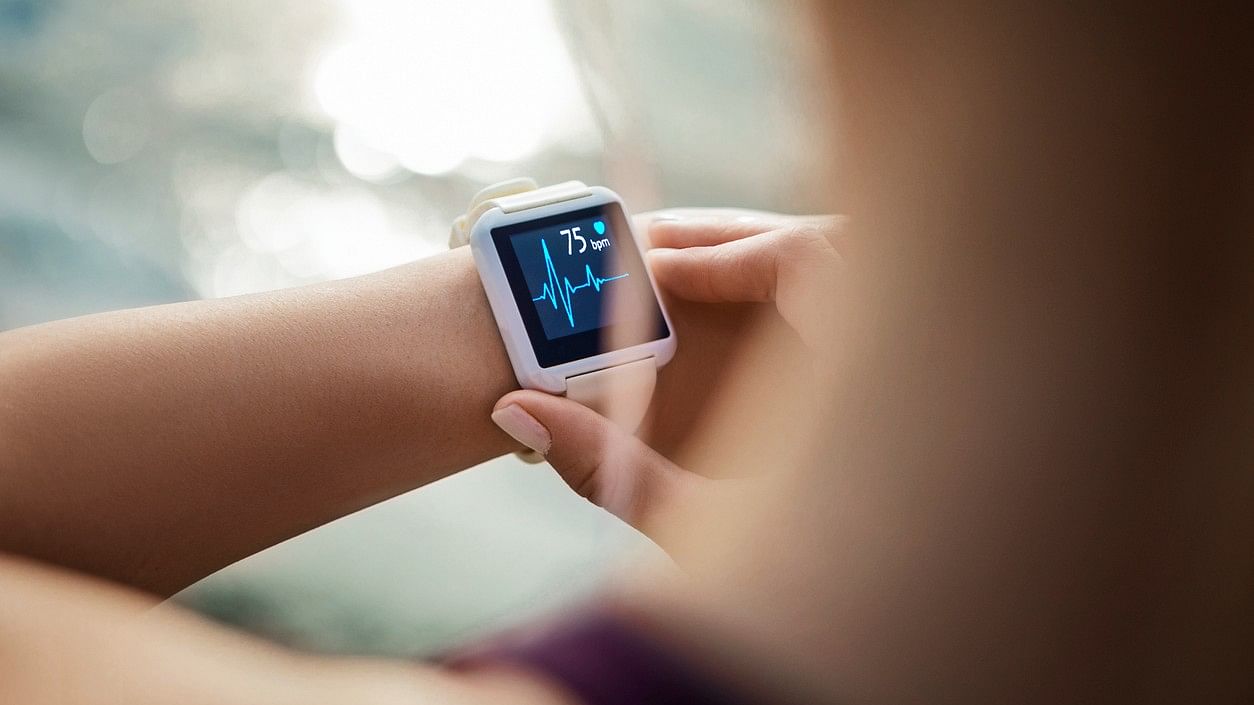
Representative image.
Credit: iStock Photo
Bengaluru: The Internet of Things (IoT) never stops giving. The innovation it inspires has made possible what most of us would have believed, even two decades ago, as figments of our imagination.
Watches are no longer tiny clocks that tell us the time of the day and finger-rings are not mere fashion accessories. IoT-powered wearable technology is redefining the utility of our devices, even our clothes, and things we patch onto our bodies.
Private market research and data platform Tracxn estimates that India has at least 340 IoT-based healthcare startups, offering an array of wearable products: from smartwatches, smart glasses, and rings to patches and key-chains.
These mini personal health monitors, most of them smartwatches, do more than just count steps and calories burned. Some devices assess sleep quality and energy levels based on stress, while some track oxygen saturation, blood pressure, and even electrocardiograms (ECG). Machine Learning drives the technology, enabling the devices to set personalised targets and predict health outcomes.
Emerging technologies are also helping clinicians remotely monitor patients, especially aiding in elder care to detect falls and seizures, or predict strokes.
At the core of it all lies the humble sensor. Sensors, with the right software and supporting technology, enable these devices to “talk” to other devices and exchange specific data via the internet.
“Sensors are evolving for the better; some of the newer generation wristables measuring ECG signals have received FDA approvals to make them medical-grade. This is getting blended with generative AI as well, where you can speak to devices like your spectacles and ask them for guidance,” says Dr Tony Raj, Dean and Head of Medical Informatics, St John’s Research Institute, Bengaluru.
However, most wearables in the health-fitness market are consumer-facing; their output cannot be considered ready medical advice. The data collected is presented in neat graphs and charts, nudging the end-user to make smarter lifestyle choices.
Guardrails to foil breaches
While innovation is key to staying ahead of competition, the questions on data accuracy remain to be answered by individual innovators. Recent studies show that enhanced interoperability, AI integration, and data security are areas many companies are focusing on, encouraging widespread adoption aimed at reduced healthcare costs.
Dr Raj notes that although many products that fall into the consumer market might have a 10 per cent inaccuracy rate, they enable positive reinforcement and health awareness in people. If any consumer product claims to be medical-grade, it must have the necessary certifications. Otherwise, take all the information presented with a pinch of salt, he adds.
Perhaps the bigger question is – how safely is this data being stored? Since most companies often store user data in the cloud, privacy breaches are a concern, especially in India, which hasn't yet formulated the rules for the Digital Personal Data Protection Act, 2023, or formally constituted the Data Protection Board of India (DPBI).
Until then, the onus remains on the companies to ensure data protection and offer users the option to erase data stored at the backend, if needed.